The ONLY Empanadas de Chiverre Recipe You Need!
This post may contain affiliate links.
If you are looking for a super unique recipe to impress friends and family at Easter, well this is your answer! These baked emapandas de chiverre are one-of-a-kind, yet easy as pie to make.
It’s Holy Week in Costa Rica, and that means we are cooking and eating all kinds of delicious food. Traditionally, Holy Week is one of the hottest weeks of the year in Costa Rica. Holy Week is also home to the most sacred days of the calendar year in Costa Rica. It’s a time when schools and businesses close in observance of Holy Thursday, Good Friday, and the Easter celebrations.
While the majority of Costa Ricans flee the heat at the beach, almost everyone observes the gastronomic traditions of this time of year. You’ll find many kinds of tamales (like our popular tamal de masa recipe) and of course, the empanadas de chiverre.
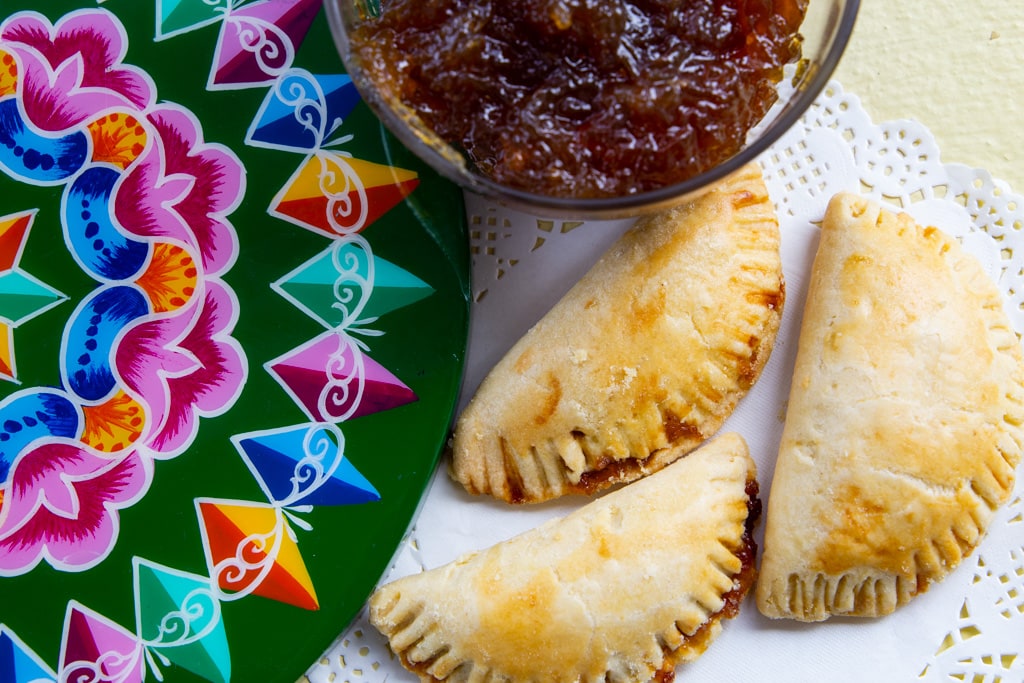
What are empanadas de chiverre?
Empanadas de chiverre are small, half-moon pockets of deliciousness. While there are many types of corn-based empanadas throughout Costa Rica and the rest of Latin America, these empanadas are made from flour-based dough. These empanadas are also baked, not fried, making them have a different texture. They are a favorite Costa Rican dessert recipe.
Coincidentally (or maybe not?) the chiverre squash comes into season in great abundance at the beginning of Lent. That gives plenty of time to use parts of the chiverre squash to make a sweet, dark brown honey-like substance to fill the empanadas.
When you combine the savory empanada dough with the sweet miel de chiverre, you have a perfect flavor that is uniquely Costa Rican, and 100% delicious. If you aren’t familiar with chiverre and can’t get it where you are in the States, (I get mine on Amazon), you can use a sweet fig jam instead. It’s a close substitute!

What is a chiverre?
In short, the chiverre is a squash.
The long answer is that the chiverre is a huge squash that is native to many Latin American countries, and goes by different names in Spanish. In English, it is known, among other names, as the fig leaf gourd. It is closely related to the pumpkin-like the pumpkin, the seeds are edible. It’s a bit stringy though, like a butternut squash.
The chiverre is huge, very hard-shelled, and tough to break open and use.
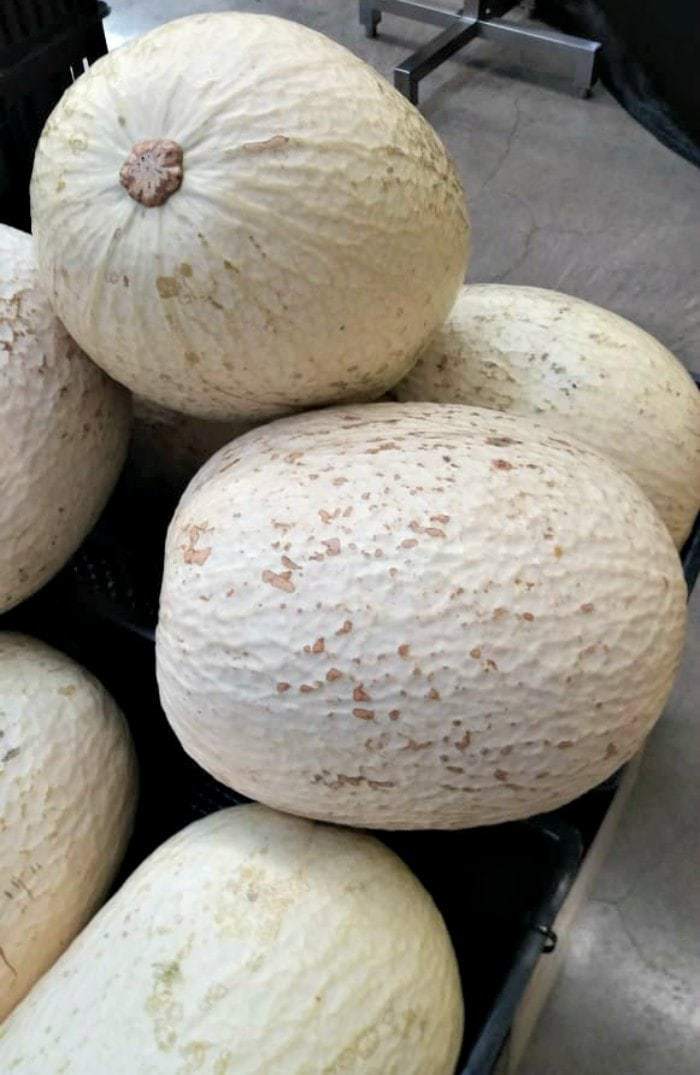
When do Costa Rican eat empanadas de chiverre?
The empanadas are an Easter season tradition- so they are eaten in the US late winter/early spring. However, miel de chiverre, which is the filling for the empanadas, can last up to 6 months in the refrigerator, so you can find the empanadas for a good part of the year if you are patient enough.
Empanadas are generally eaten with traditional Costa Rican coffee, or agua dulce. The Costa Rican coffee tradition (which happens around 10 am and again at 4 pm each day) is a geat time to enjoy this snack. These empanadas de chiverre are also a Costa Rican breakfast food, a snack food, and generally the perfect vegetarian seasonal indulgence during Lent.
How do you make miel de chiverre filling?
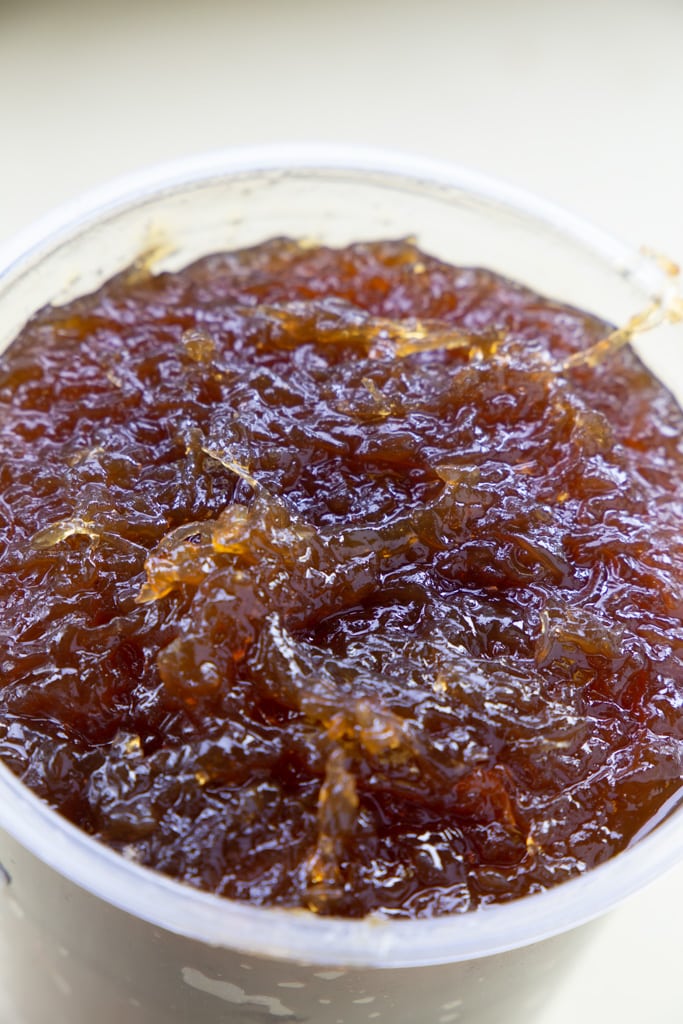
The short answer is that 99% of people buy miel de chiverre and make the empanadas from scratch. In Costa Rica, you can buy about a kilo of miel de chiverre for about $7, and that will last you through about 4 batches of empanadas.
The ingredients for miel de chiverre would cost almost $3.50, and it takes hours to make. In my opinion, you have to be a pretty diehard traditionalist to make miel de chiverre at home.
But if you really want to make it, you open up the chiverre and cut it up. Then you boil the insides with a tapa de dulce, which is the burned top of a sugar cane after making brown sugar. Add some cinnamon, fig, etc. Let it cool and use!
Related post: Costa Rican Empanada Recipes
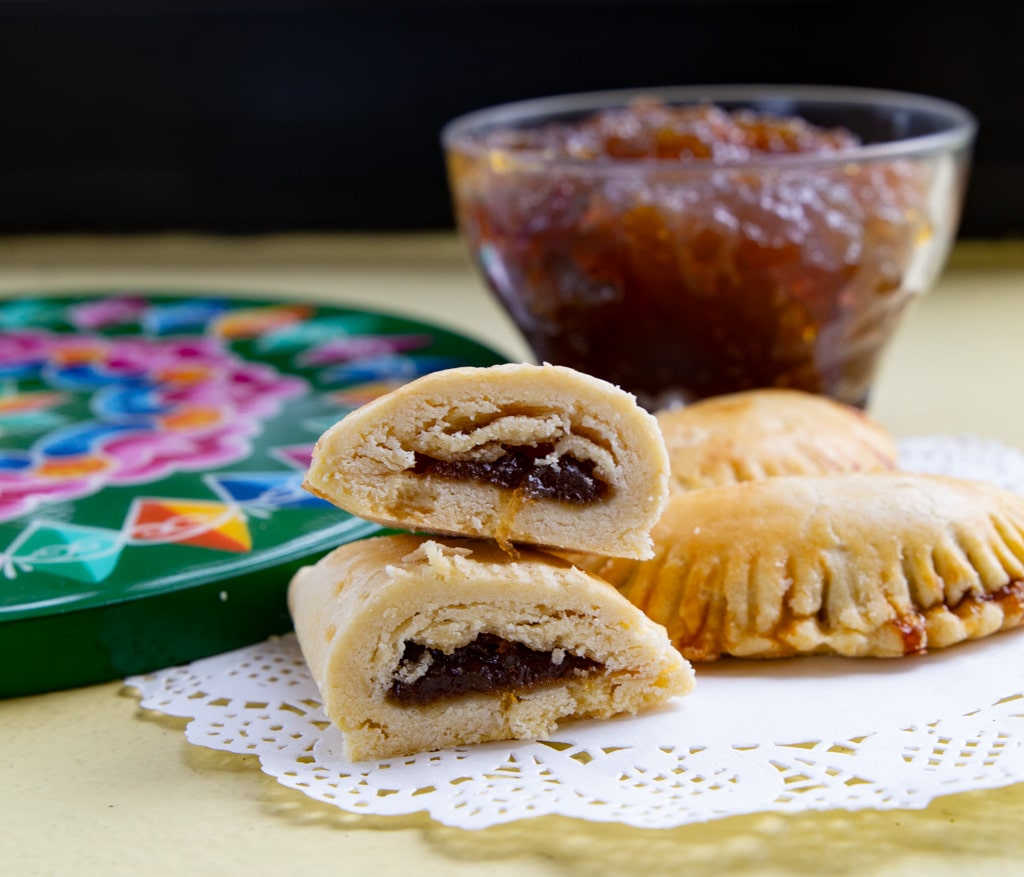
What do I serve with empanadas de chiverre?
Definitely Costa Rican coffee. I love to eat them with a glass of ice-cold Diet Coke. Also traditional to eat them with hot chamomile tea or agua dulce.
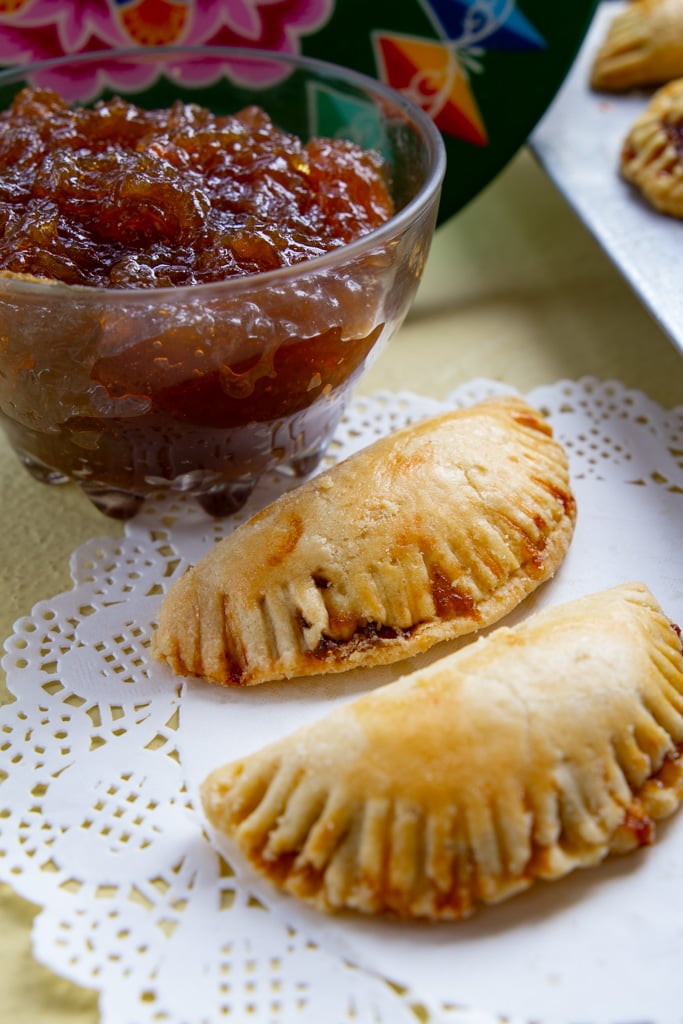
What’s most important is that empanadas de chiverre aren’t eaten alone. Since a single batch yields 25 empanadas it is very common to make several batches and share empanadas with friends and family.
Of course, in smaller communities, people compare the flavor and texture of the empanadas de chiverre in what becomes an informal competition to have made the best empanadas de chiverre that year. And since no one eats empanadas alone, there is plenty of time to gossip about the year’s empanadas.
The empanadas dough is a basic one, so you can use it to make all kinds of different empanadas. Dulce de leche, pineapple, cajeta, coconut… you get the idea.
Related post: Costa Rican Empanada Recipes

Empanadas de Chiverre Recipe
Ingredients
(printable recipe below)
Empanada Ingredients
- white flour
- margarine at room temperature
- heavy cream
- miel de chiverre
- egg
- spray-on cooking oil such as Pam
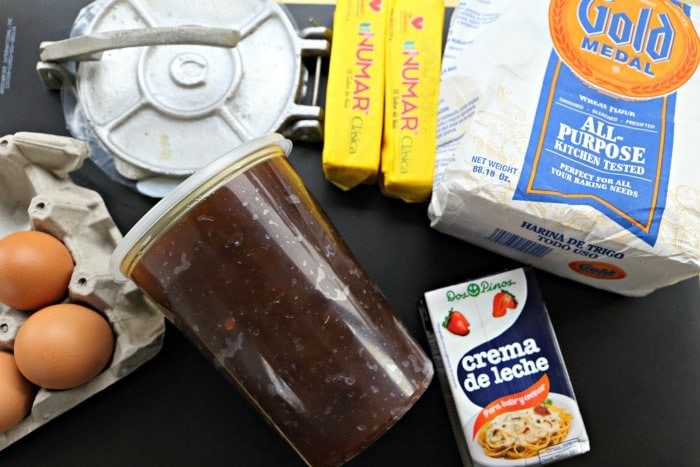
Baking Tools
- Large bowl
- Plastic shopping bag cut up into 15-20 3 x 3″ squares
- Tortilla press
- Fork
- baking pans
Instructions
To make the dough
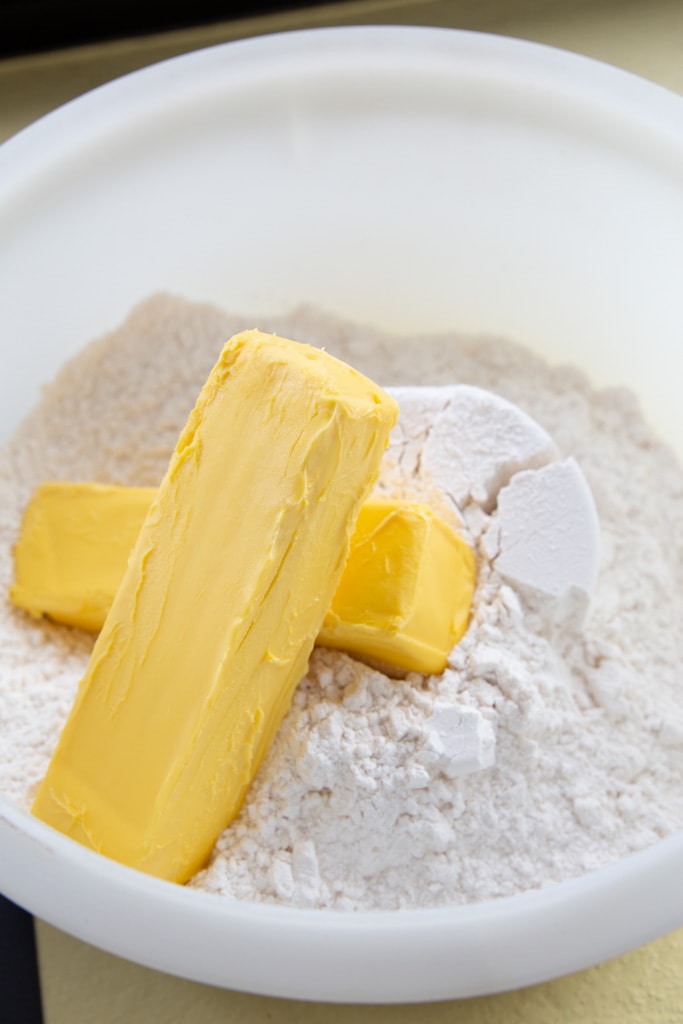
- In a large bowl, combine 3 cups of flour and 2 sticks of margarine. Suing your hands, combine until all of the four is integrated into the margarine. The mixture will be a bit crumbly.
- Measure about 1/2 cup whipping cream and add to the dough. Using your hands, combine. From here on out, add cream until the entire mixture is the consistency of cookie dough.
- Tips: It is much easier to add the whipping cream slowly to gain the right consistency than to have too much cream and a sticky dough. However, if you do end up in a situation where you added too much whipping cream, you can simply add flour to the dough until you have the right consistency. Once you do, spend a couple of minutes kneading the dough on the countertop just to get everything worked in.
- Note- if you used butter instead of margarine, the dough will come out much lighter in color. The flavor, to me, is about the same.
To form the empanadas:
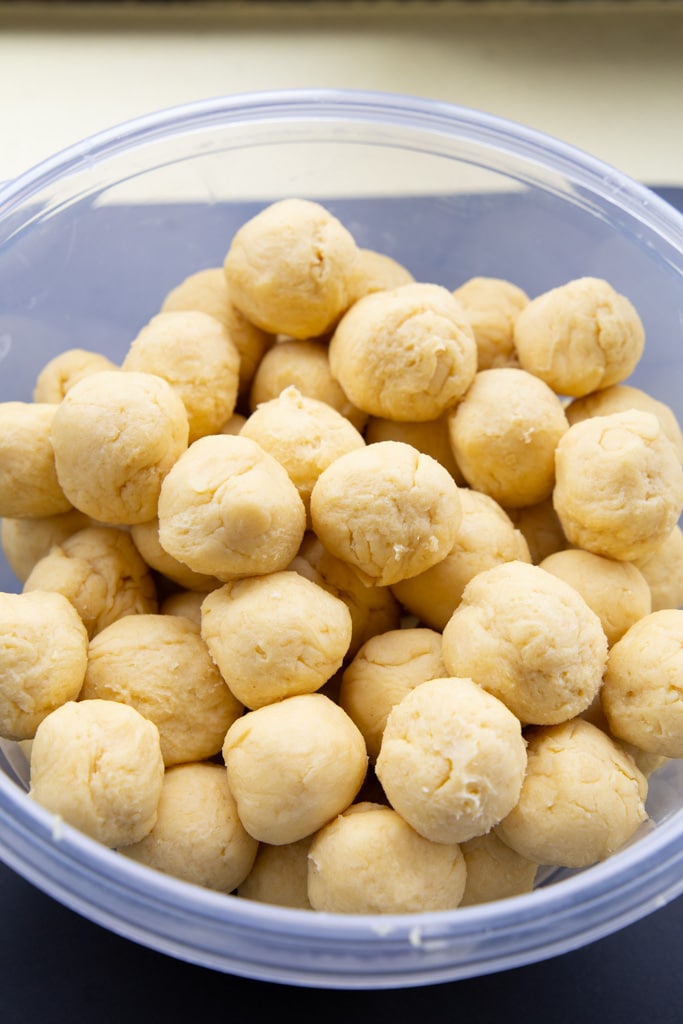
- Pinch off pieces of the dough and roll into 1″ balls
- You can place the balls back in the large mixing bowl until you have completed all of the dough, or you can do each step one at a time. Typically many people are involved in the preparation of the empanadas in Costa Rica, so each person will take a station.
- Open your tortilla maker and place one of the pieces of the plastic bag in the center.
- Place a single ball of dough in the middle of the plastic bag on the tortilla maker.
- Place another piece of the plastic bag on top and close the tortilla maker.
- Press down until flat. Note- I used Ziploc bags for this once, and they didn’ t work as well as a shopping bag.
- Remove the top plastic bag pice and place it back in the tortilla maker.
- Move the circle of dough for the empanada, with the plastic bag, to the side.
- Using a fork, place about a tablespoon of miel de chiverre on half of the circle of dough
- Close the other half of the dough over the miel de chiverre and lightly seal.
- Using a clean fork, make hash marks all around the edge of the empanada (not on the seam)
- Repeat these steps until all the dough has been used.
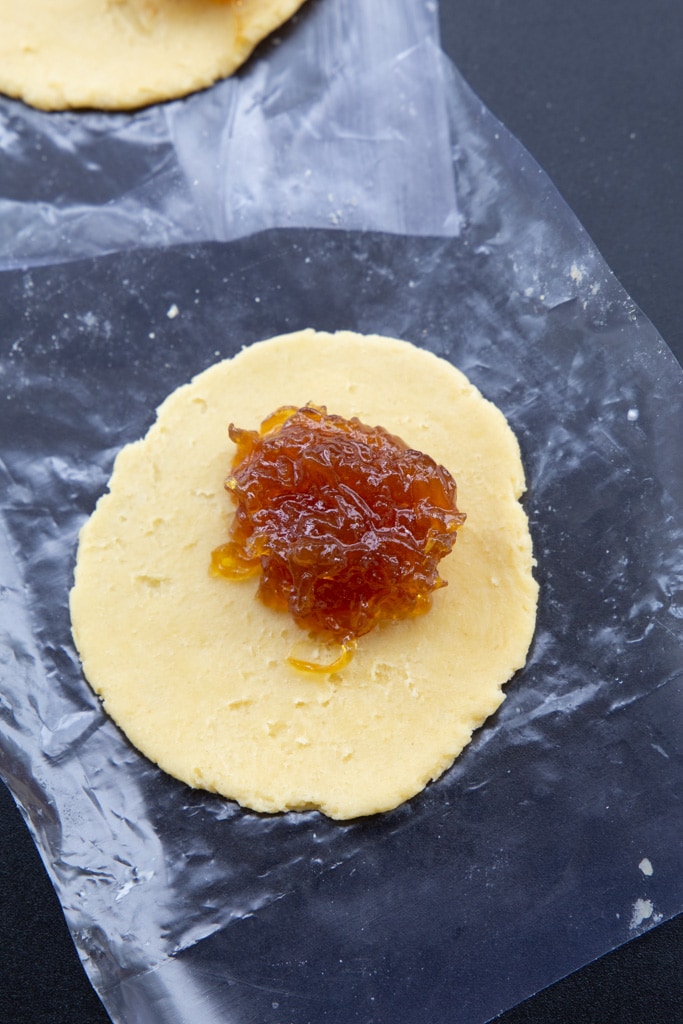
To bake the empanadas:
- Lightly grease a large baking pan.
- Lightly place flour on top of the baking pan.
- In a small bowl, beat the egg and add a tablespoon of water.
- Place the empanadas on the baking pan. These will not expand, so they can be quite close together on the pan with no problems.
- Using your finger or a small cooking brush, gently spread the egg wash on the top of the empanadas.
- Once the baking tray is full of empanadas, place the empanadas in the oven. They will bake for about 20 minutes- do not remove until they are golden brown. Note- it’s pretty hard to outright burn these, but it is easy for them to be undercooked. So let them in a bit longer than you’d think to make sure they get nice and crispy.
- Heat oven to about 375 degrees Fahrenheit. If your oven heats fast, then you don’t need to do this step until later- it takes about 25 minutes to prepare the first round of empanadas for baking. And if you want to bake them all at once, even longer.
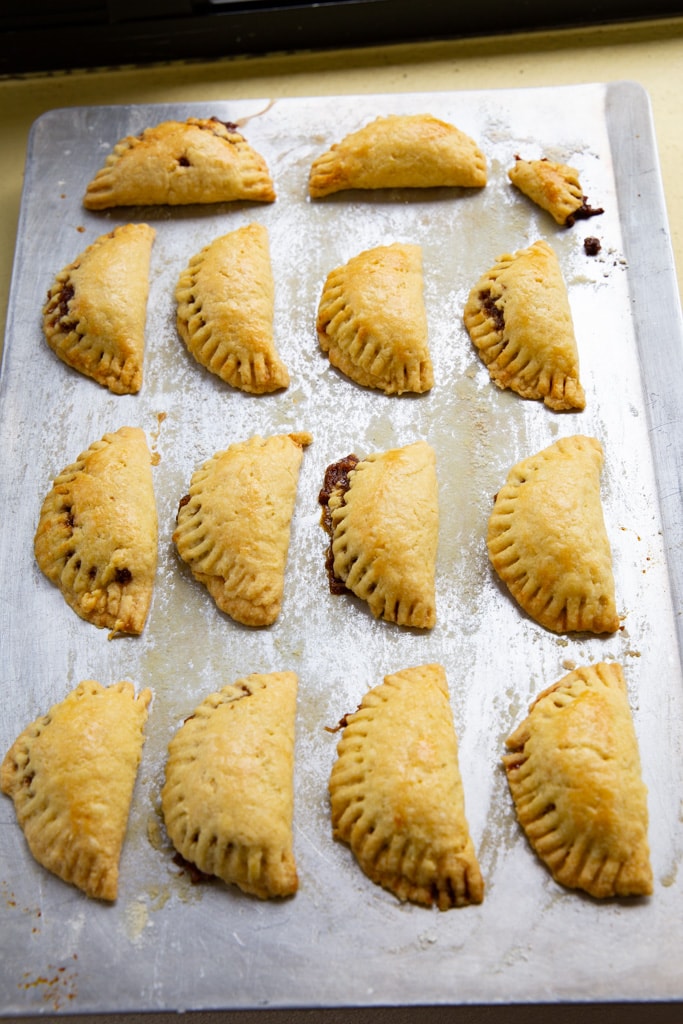
Join me over at my favorite place- Instagram.
Substitutions
You can use butter in place of margarine, which is what I do. The color is slightly lighter than typical, but I like the flavor a bit better.
You could replace some of the white flour with up to 1/2 cup of whole wheat flour. I haven’t tried it with almond flour or other gluten free flour, but I am sure they would turn out fine.
Variations
This 3-2-1 recipe for the dough is used in almost all Costa Rican sweet dessert empanadas. Here’s a list of some of my favorites:
- Dulce de leche empanadas
- Empanadas de Cajeta
- Coconut Empanada Recipe – Costa Rica
- Costa Rican Pineapple Empanadas
Like Pura Vida Moms on Facebook and never miss a post!
Printable Recipe
Empanadas de chiverre
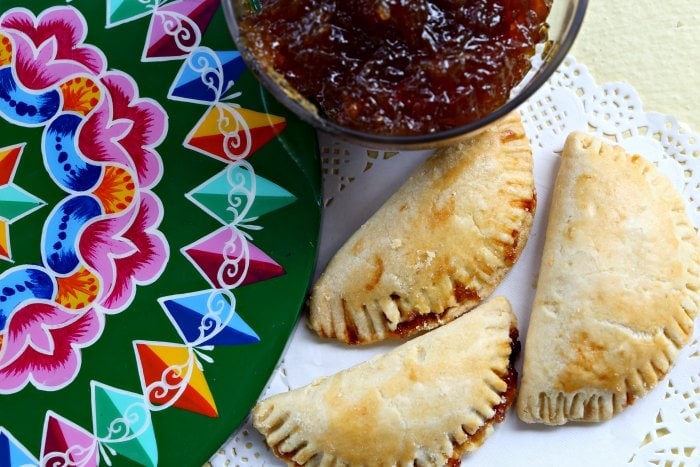
These Costa Rican empanadas de chiverre are the perfect mix of sweet and savory. Made from scratch and baked to golden perfection, these traditional Costa Rican Easter treats are delicious and fun to make with friends.
Ingredients
- Empanada Ingredients:
- 3 cups white flour + 2-3 tablespoons extra
- 2 stick margarine can use butter- room temperature
- 1 cup heavy cream
- 3 cups miel de chiverre
- 1 egg
- spray-on cooking oil such as Pam
- Tools:
- Large bowl
- Plastic shopping bag cut up into 15-20 3 x 3" squares
- Tortilla maker
- Fork
- 2-3 baking pans
Instructions
- For the dough:
- In a large bowl, combine 3 cups of flour and 2 stick of margarine. Suing your hands, combine until all of the four is integrated into the margarine. The mixture will be a bit crumbly.
- Measure about 1/2 cup whipping cream and add to the dough. Using your hands, combine. From here on out, add cream until the entire mixture is the consistency of cookie dough.
- Tips: It is much easier to add the whipping cream slowly to gain the right consistency than to have too much cream and a sticky dough. However, if you do end up in a situation where you added too much whipping cream, you can simply add flour to the dough until you have the right consistency. Once you do, spend a couple of minutes kneading the dough on the countertop just to get everything worked in.
- Note- if you used butter instead of margarine, the dough will come out much lighter in color. The flavor, to me, is about the same.
To form the empanadas:
- Pinch off pieces of the dough and roll into 1" balls
- You can place the balls back in the large mixing bowl until you have completed all of the dough, or you can do each step one at a time. Typically many people are involved in the preparation of the empanadas in Costa Rica, so each person will take a station.
- Open your tortilla maker and place one of the pieces of the plastic bag in the center.
- Place a single ball of dough in the middle of the plastic bag on the tortilla maker.
- Place another piece of the plastic bag on top and close the tortilla maker.
- Press down until flat. Note- I used Ziploc bags for this once, and they didn' t work as well as a shopping bag.
- Remove the top plastic bag pice and place it back in the tortilla maker.
- Move the circle of dough for the empanada, with the plastic bag, to the side.
- Using a fork, place about a tablespoon of miel de chiverre on half of the circle of dough
- Close the other half of the dough over the miel de chiverre and lightly seal.
- Using a clean fork, make hash marks all around the edge of the empanada (not on the seam)
- Repeat these steps until all the dough has been used.
To bake the empanadas:
- Lightly grease a large baking pan.
- Lightly place flour on top of the baking pan.
- In a small bowl, beat the egg and add a tablespoon of water.
- Place the empanadas on the baking pan. These will not expand, so they can be quite close together on the pan with no problems.
- Using your finger or a small cooking brush, gently spread the egg wash on the top of the empanadas.
- Once the baking tray is full of empanadas, place the empanadas in the oven. They will bake for about 20 minutes- do not remove until they are golden brown. Note- it's pretty hard to outright burn these, but it is easy for them to be undercooked. So let them in a bit longer than you'd think to make sure they get nice and crispy.
- Heat oven to about 375 degrees Fahrenheit. If your oven heats fast, then you don't need to do this step until later- it takes about 25 minutes to prepare the first round of empanadas for baking. And if you want to bake them all at once, even longer.
Notes
Note: It is typical to make many rounds, or "tandas," of empanada dough. However, this recipe does not double well so it is better to make each batch of dough separately.
Recommended Products
As an Amazon Associate and member of other affiliate programs, I earn from qualifying purchases.
Nutrition Information:
Yield:
25Serving Size:
1Amount Per Serving: Calories: 143Total Fat: 7gSaturated Fat: 3gTrans Fat: 0gUnsaturated Fat: 4gCholesterol: 22mgSodium: 66mgCarbohydrates: 16gFiber: 1gSugar: 0gProtein: 3g
Please double-check this information with your favorite nutrition calculator.
Where can I get chiverre?
If you are not in Costa Rica you can find chiverre on Amazon. If you are in Costa Rica, many grocery stores sell it, as well as bakeries.
How do I make these empanadas gluten-free?
If you use gluten-free flour, you will just want to use about 1/4 of a cup more than calls for in this recipe.
What is chiverre?
Chiverre is a type of squash endemic to Costa Rica. In English it is called a figleaf gourd, and is similar to the butternut squash only much larger.
YOU’LL ALSO LOVE:
Every single empanada recipe we’ve published- Costa Rican Empanada Recipes
COSTA RICAN HOLIDAY CELEBRATIONS
Don’t Forget To Pin It!
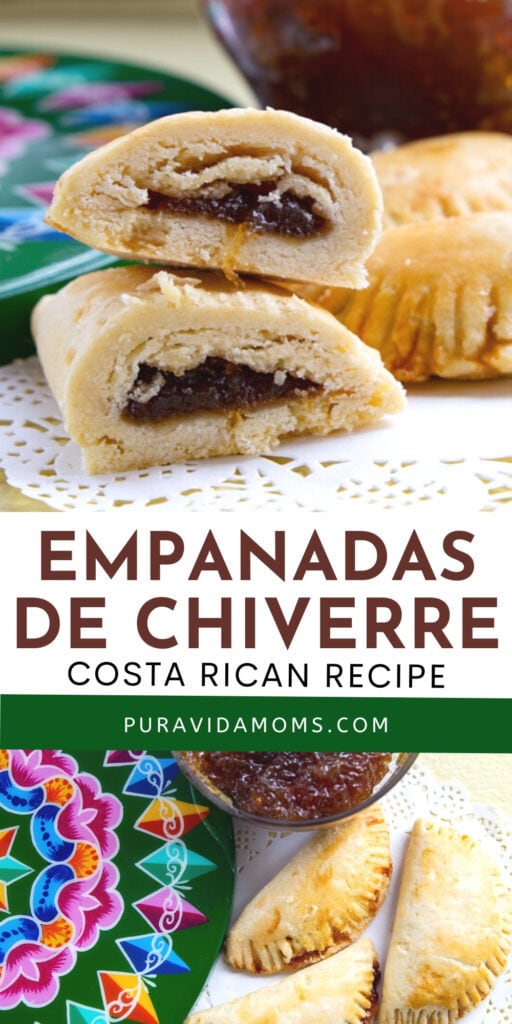

Christa Jimenez
Welcome! I’m Christa, a Spanish teacher married to a handsome Costa Rican and mother of two bilingual daughters. We’ve spent over 25 years living in and traveling to Costa Rica with our daughters, and this website is my love letter to all things Costa Rica- and to bilingual parenting too. You can read my full story here. Thanks for stopping by!





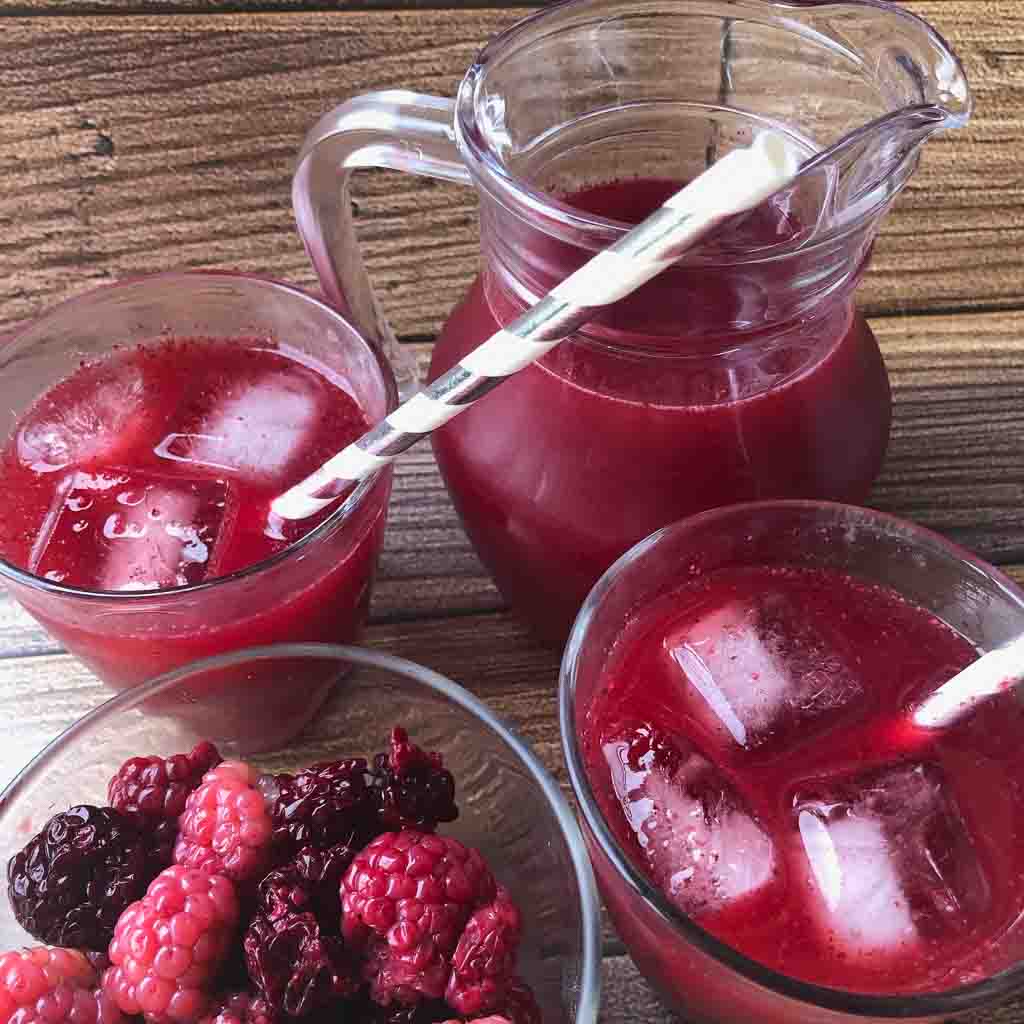
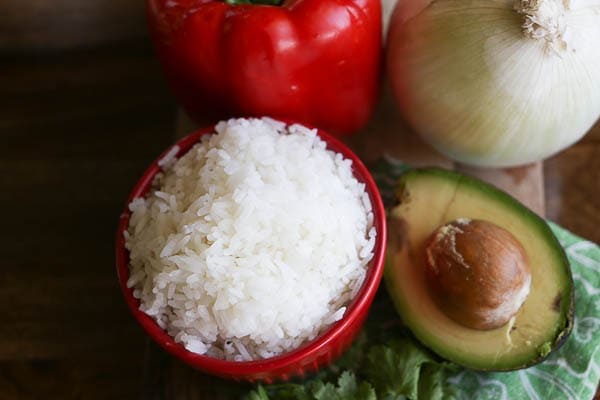
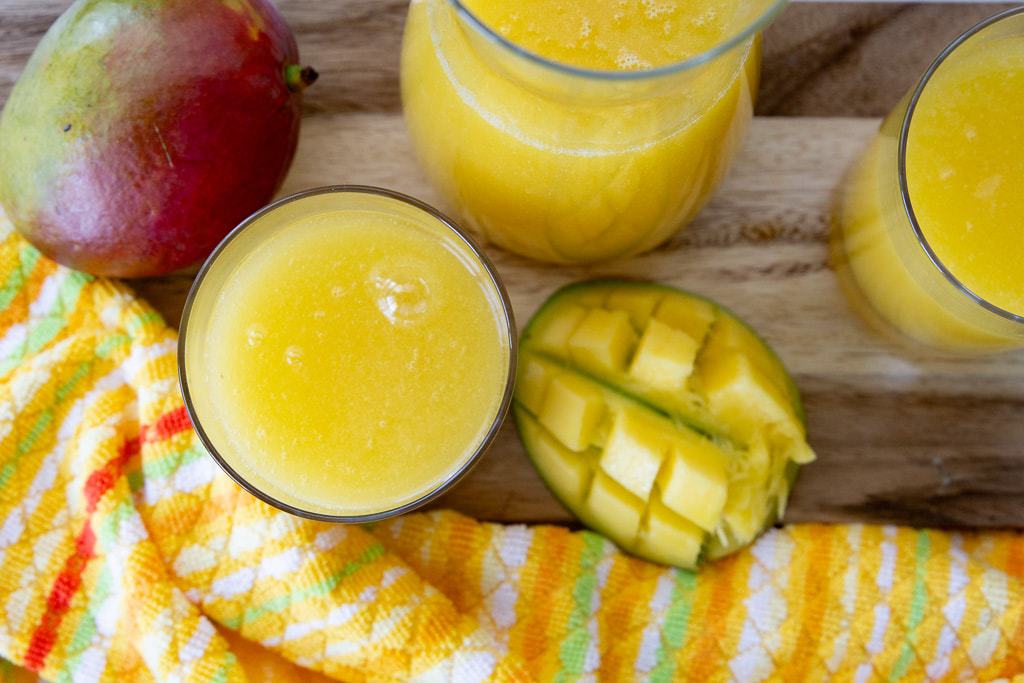
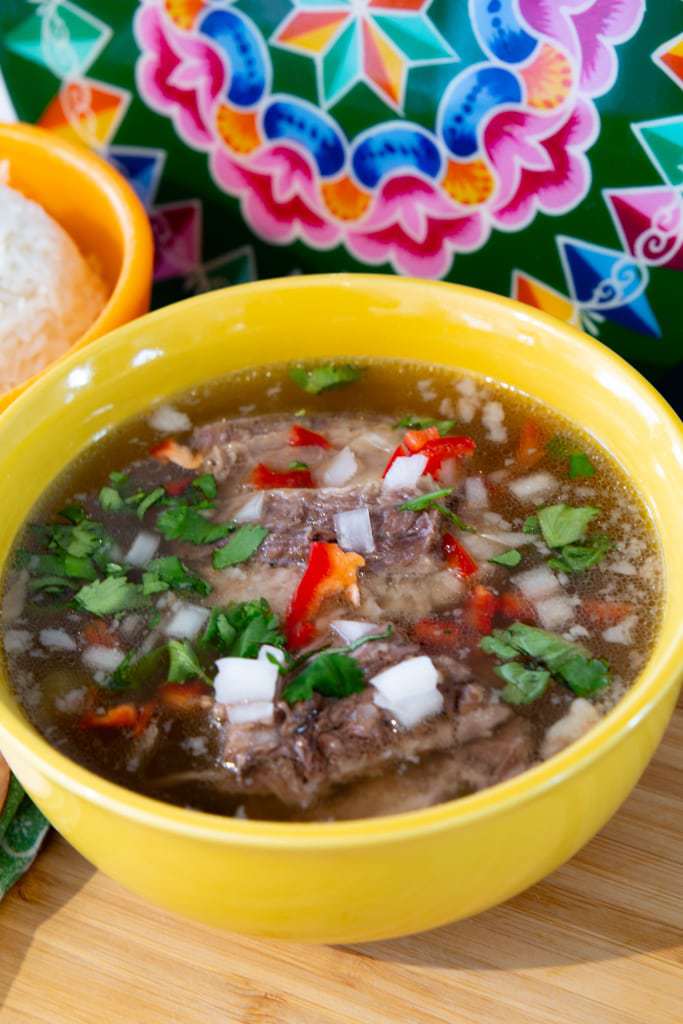
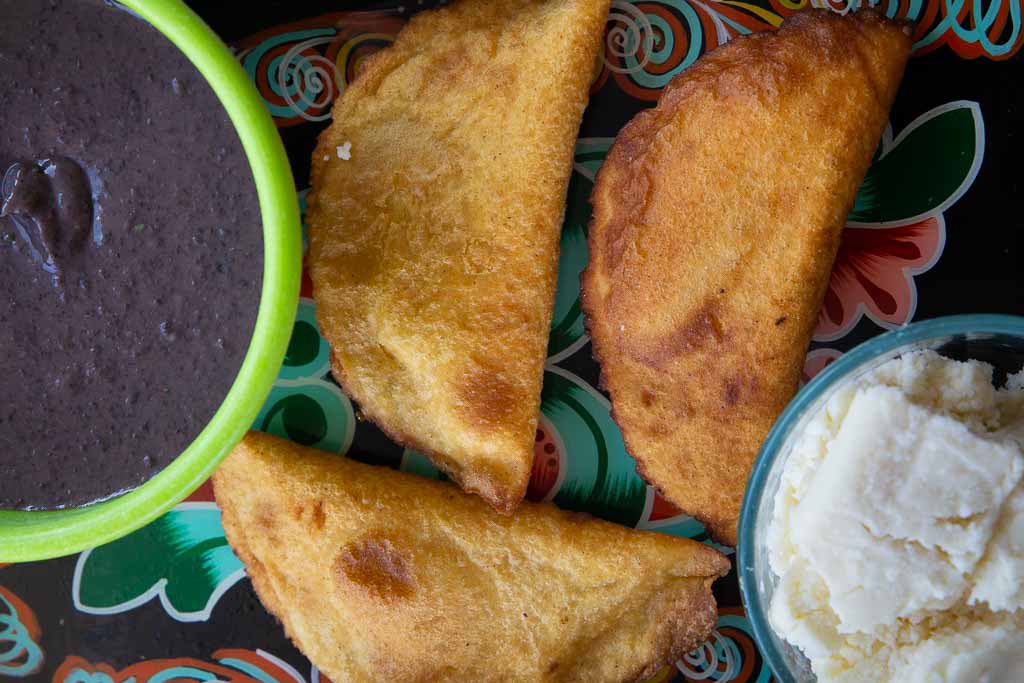
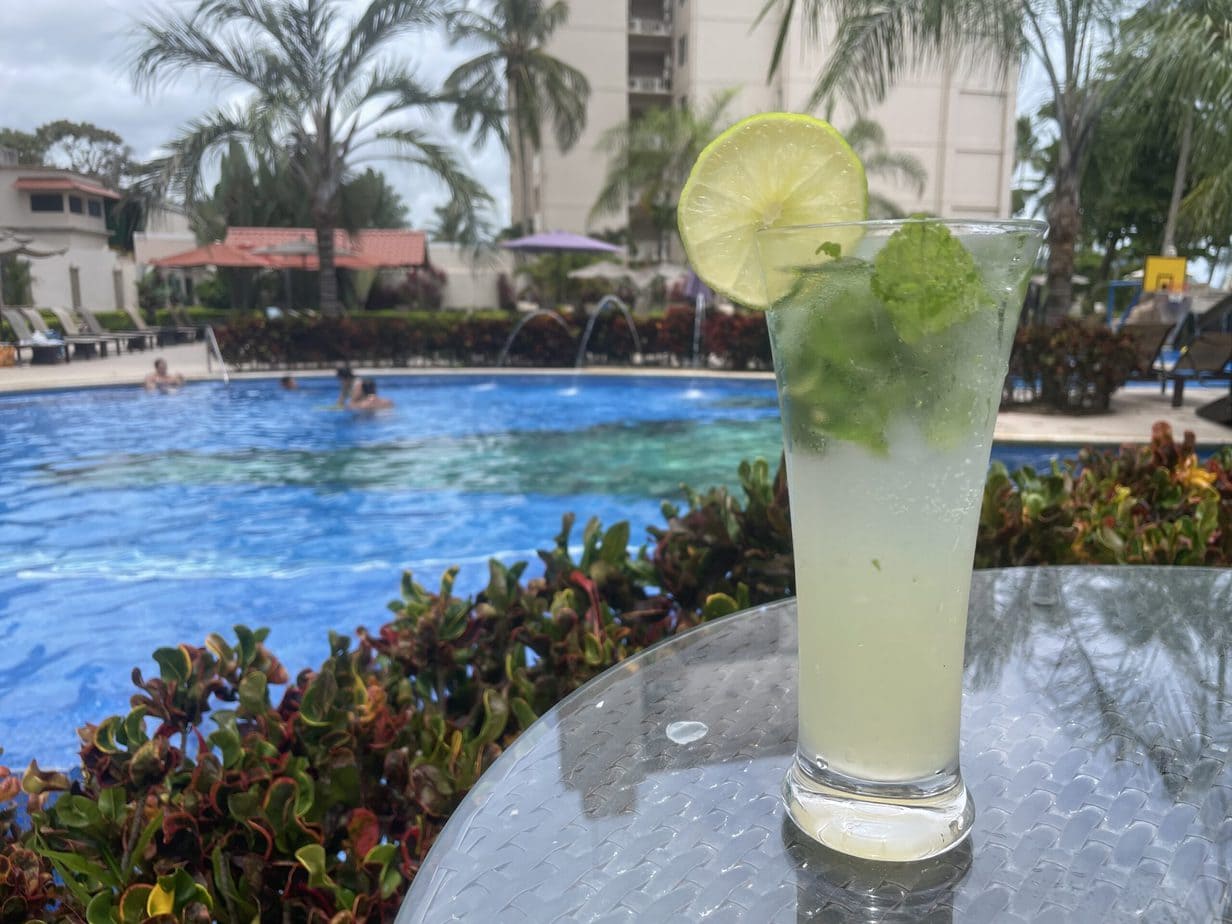

Thanks for that nice información about my country. First, you can look forward miel de chiverre in Amazon, there are a atore in NJ that sell many products from CR. Second, palm sunday means commemorates the entrance of Jesus into Jerusalem (Matthew 21:1–9). The death is a commemorates until friday… I hope this info hello you!!
Hola Fabi! Thanks for visiting! I did just find the miel on Amazon last week but haven’t updated the post yet. You beat me! And I’mworkong on a post about Costa Rican processions. We love to participate and are so sad that we won’t be having them this year. Feliz dia! ~Christa
Hi Christa,
I’m a brand new subscriber to your site, and was looking for the recipe of how to make the chiverre. When you click on it in the empenadas recipe, it just takes you on a big circle, I think, and you can’t find the detailed instructions/recipe for the filling.
Please advise,
Barbara
PS I am here in Santo Domingo Costa Rica at a Spanish Immersion program called Common Ground. It’s great.
hi Barbara! Thanks for messaging. I am going to fix these links! In Costa Rica you can just get it at the supermarket. In the US you have to go to Amazon. And I love Common Ground- they are a really good school! ~Christa